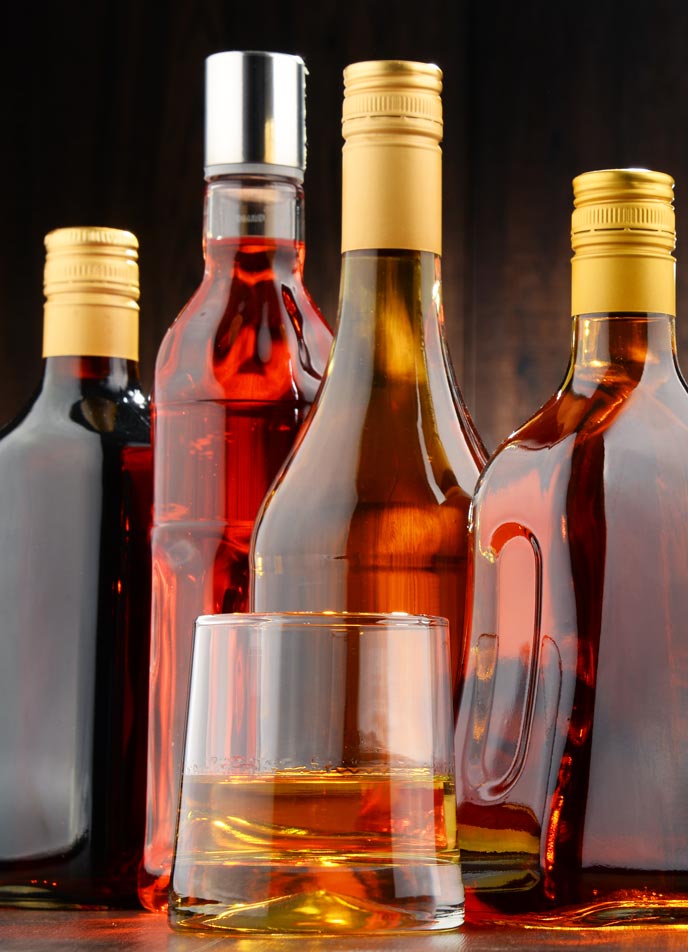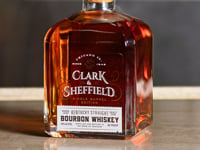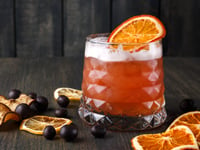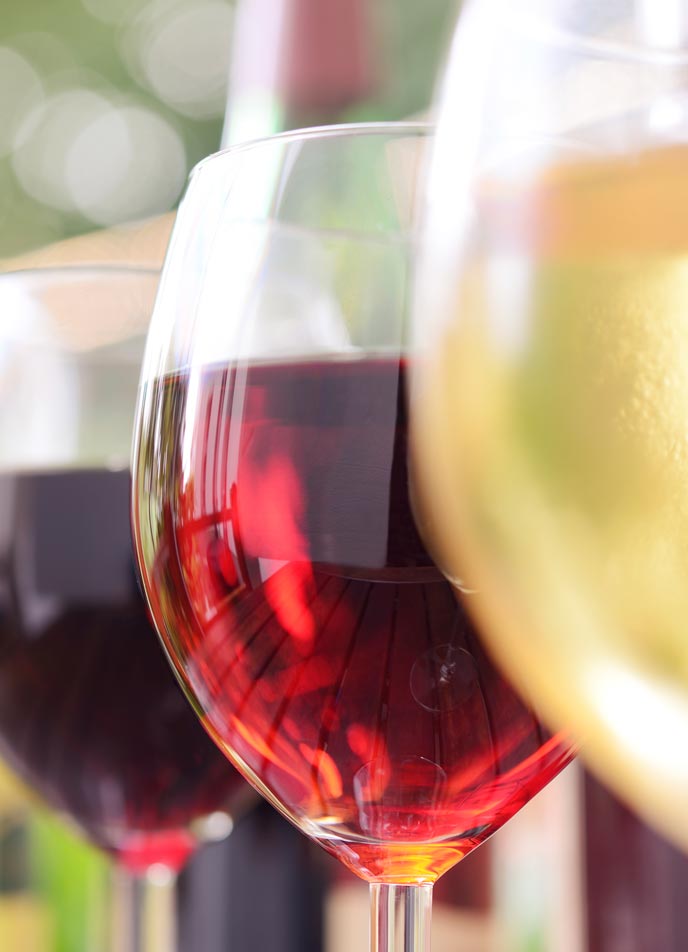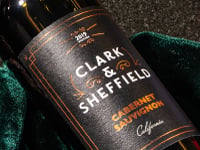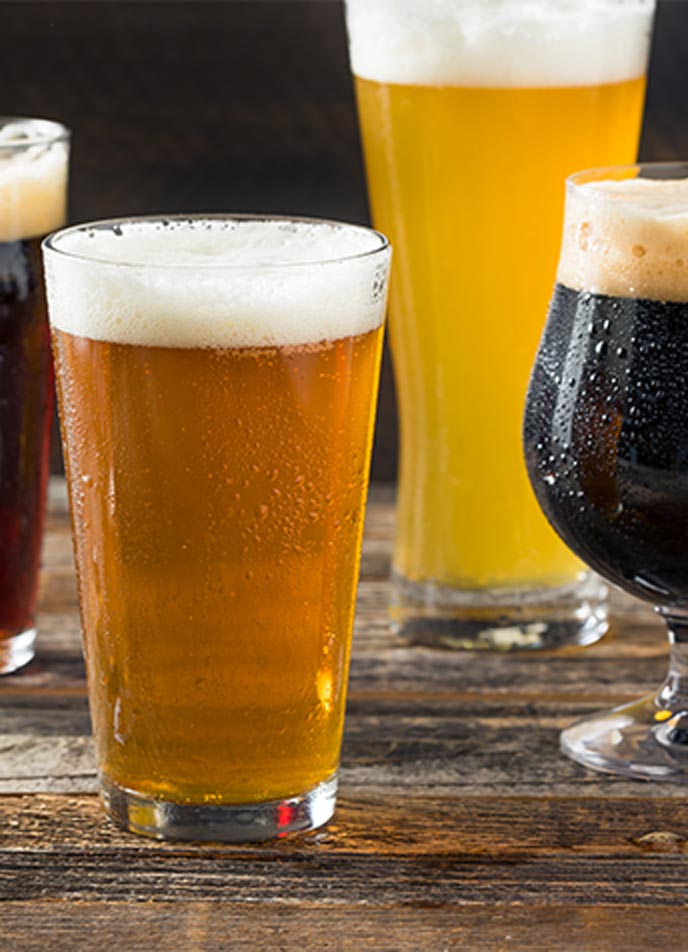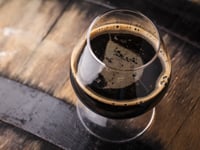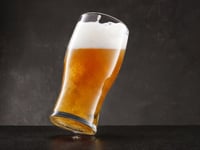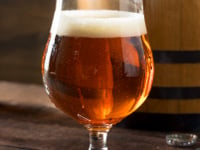Scotch
What is Scotch whisky? Scotch is produced at a distillery in Scotland from water and malted barley to which only whole grains of other cereals may be added.
What is Scotch whisky?
Produced at a distillery in Scotland from water and malted barley (to which only whole grains of other cereals may be added) all of which have been:
Processed at that distillery into a mash.
Converted at that distillery to a fermentable substrate only by endogenous enzyme systems. No added enzymes.
Fermented at that distillery only by adding yeast.
Distilled at an alcoholic strength by volume of less than 94.8% (190 US proof).
Wholly matured in an excise warehouse in Scotland in oak casks of a capacity not exceeding 700 liters (185 US gal) for at least three years.
Retaining the color, aroma, and taste of the raw materials used in, and the method of, its production and maturation.
Containing no added substances, other than water and plain (E150A) caramel coloring.
Comprising a minimum alcoholic strength by volume of 40% (80 US proof).
Within Scotch whisky there are several varieties:
Single Malt – Whisky produced on a pot still at one distillery made from 100% malted barley. The “single” in single malt indicates production at a single distillery, not a single barrel. Single malts are bottled from many barrels into a single batch, with the youngest barrel being the age displayed on the label. 12 year whisky, for example, may contain whiskies older than 12 years but none younger than 12. Examples of this style are whiskies from Macallan, Glenlivet and Glenfiddich.
Single Grain – Grain whisky, a blend of malted barley and other grains, most commonly corn or wheat, produced at a single distillery. Grain whiskies are commonly made on a column still, which produces whiskies of much higher proof than a pot still and also of much lighter character. They are light and fruity. Examples of this style are whiskies from Port Dundas and Cameronbridge.
Blended Malt – A blend of single malt whiskies from two or more distilleries. Often more robust in flavor and body than some blended Scotch counterparts. Examples of this style include Johnnie Walker Green Label and Monkey Shoulder.
Blended Grain – A blend of grain whiskies from two or more distilleries. This is one of the least common types of Scotch whisky. Compass Box Hedonism is an example of this style.
Blended Scotch – The most popular style of Scotch whisky, making up roughly 85% of the Scotch markey globally. Blended Scotch is made from malt and grain whiskies from several distilleries. They are blended to produce a distinct but consistent character. In this sense they are the pinnacle of the art of the whisky blender. Examples are Johnnie Walker, Dewar’s and Famous Grouse.
Whisky regions of Scotland:
Scotch Whisky production is as varied as the rugged landscape of Scotland itself, with some being intensely flavored with earthy peat smoke or aging in Sherry casks, and others being light, fresh and floral. Scotch whisky production is categorized into traditional whisky making regions by the governing body of Scotch whisky, the SWA.
Lowlands – Distilleries from roughly Glasgow and Edinburgh south, this region is known for lighter and more fruity forward whiskies. Some are triple distilled, but this is not a requirement. Examples include Auchentoshan, Glenkinchie, Bladnoch and many new distilleries such as Clydeside and Holyrood.
Highlands – The largest defined area, with an equally large variety of flavor. Lightly peated coastal styles include Oban and Ardnamurchan, and unpeated classics like Dalmore, Glenmorangie and Edradour are also scattered across the Highlands.
Speyside – Named for the River Spey, this is a sub-region within the Highlands that contains by far the largest number of Scotch distilleries. Speyside whiskies can vary in character, even including some peat use. Examples include Glenfiddich, Macallan, Glenfarclas, Glenallachie and Craigellachie.
Campbeltown – Once one of the busiest regions, there are now just three distilleries: Springbank, Glen Scotia and Kilkerran.
Islay – This tiny island off of Scotland’s southwest coast is known for intensely flavorful and intensely smokey whiskies. Nine distilleries currently sit on the island, notably Laphroaig, Lagavulin, Ardbeg and Bowmore.
How to drink Scotch:
Many purists will insist that Scotch is best enjoyed neat, and NEVER with ice. We of course disagree somewhat, any drink should be enjoyed however you choose, but ice can often dull some of the more subtle nuances of properly aged Scotch whisky. We enjoy it with a bit of water, but there is nothing wrong with a refreshing Scotch and soda. Although no longer the mixology stalwart it was decades ago, there are still great cocktails to be made with Scotch whiskies, including:
Some popular Scotch cocktails:
|
|
Which Scotch is best?
Another impossible decision for a whisky nerd. Thankfully Scotch whisky, blended is single malt, is loaded with great bottles such as:
